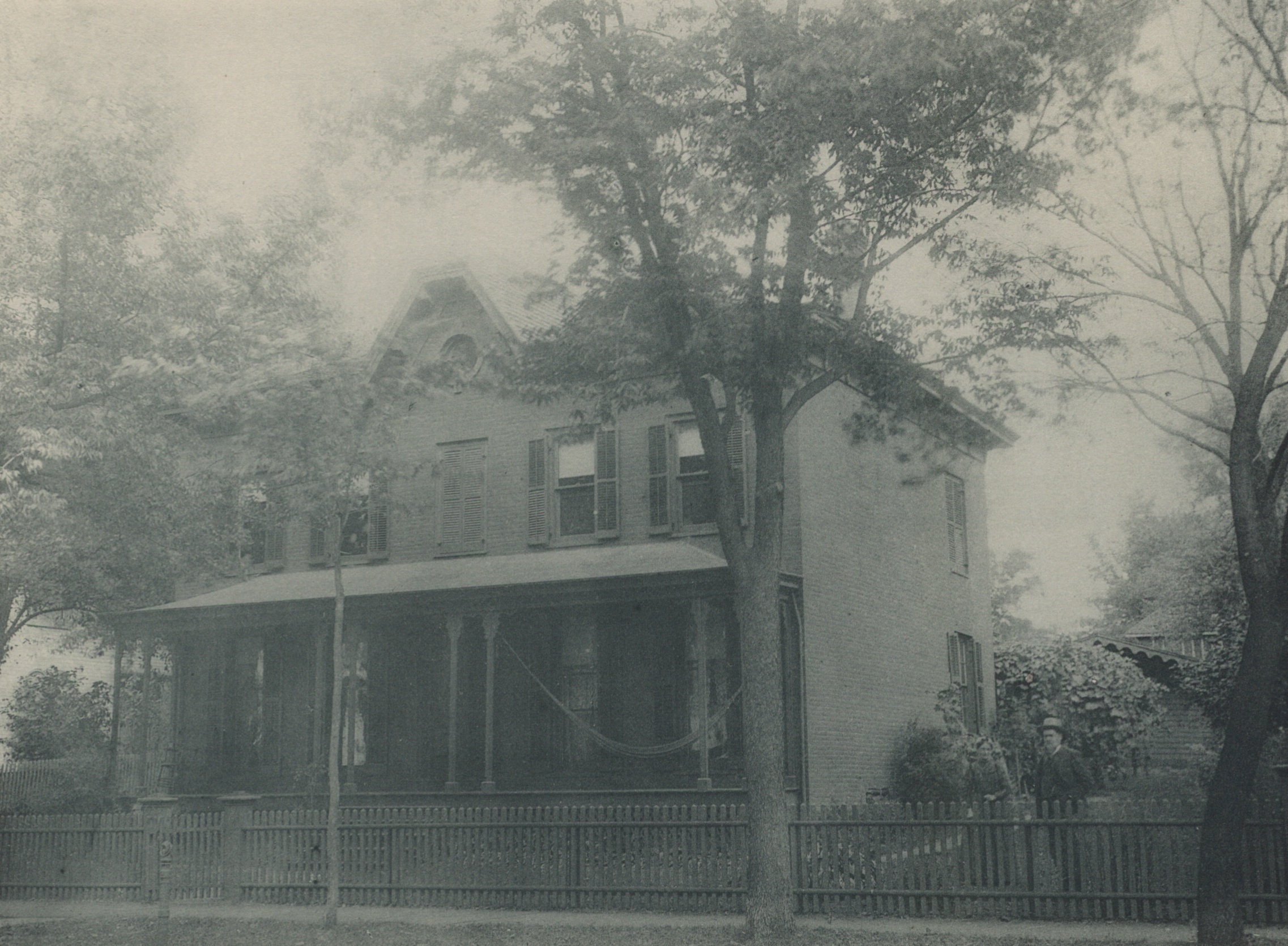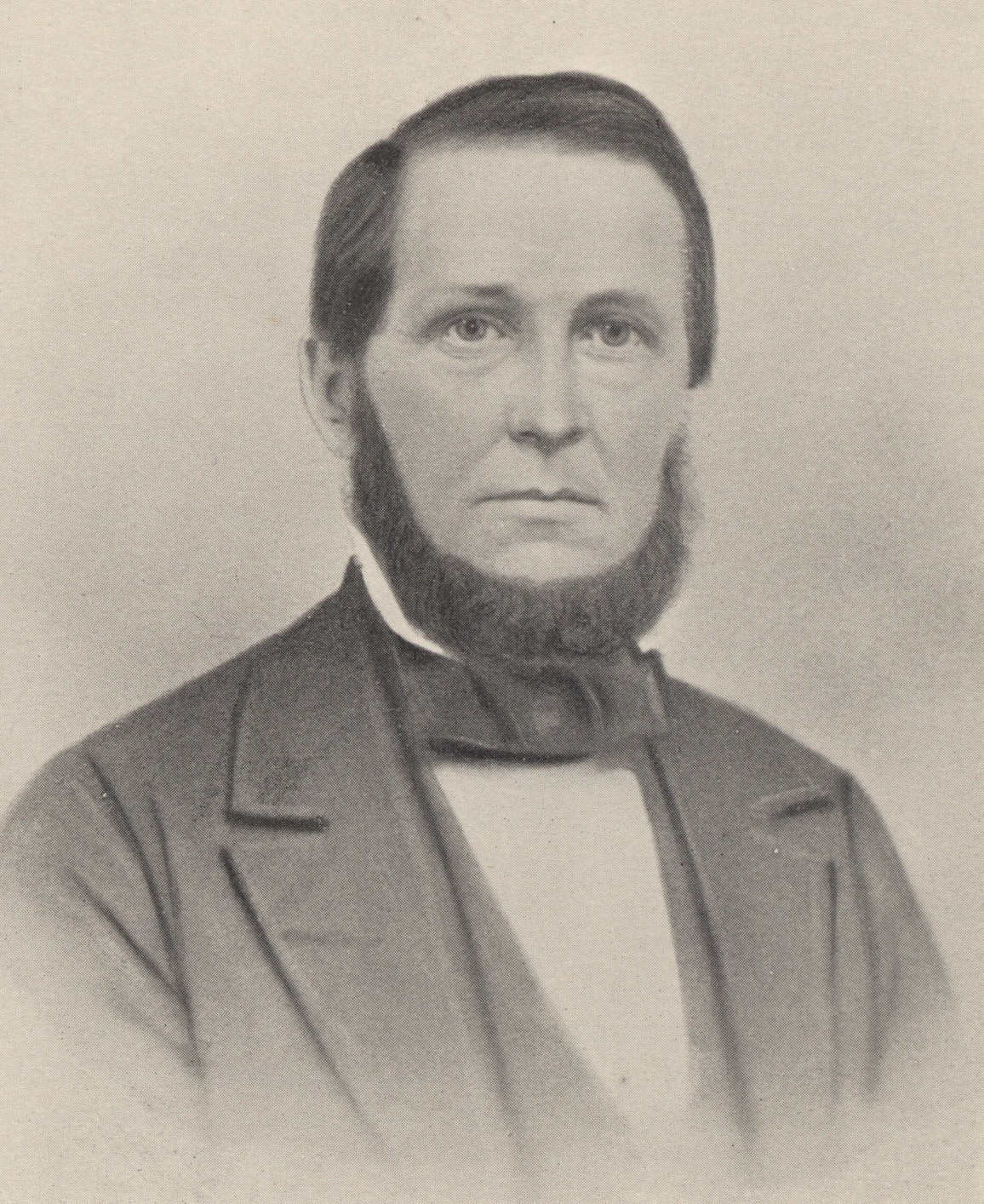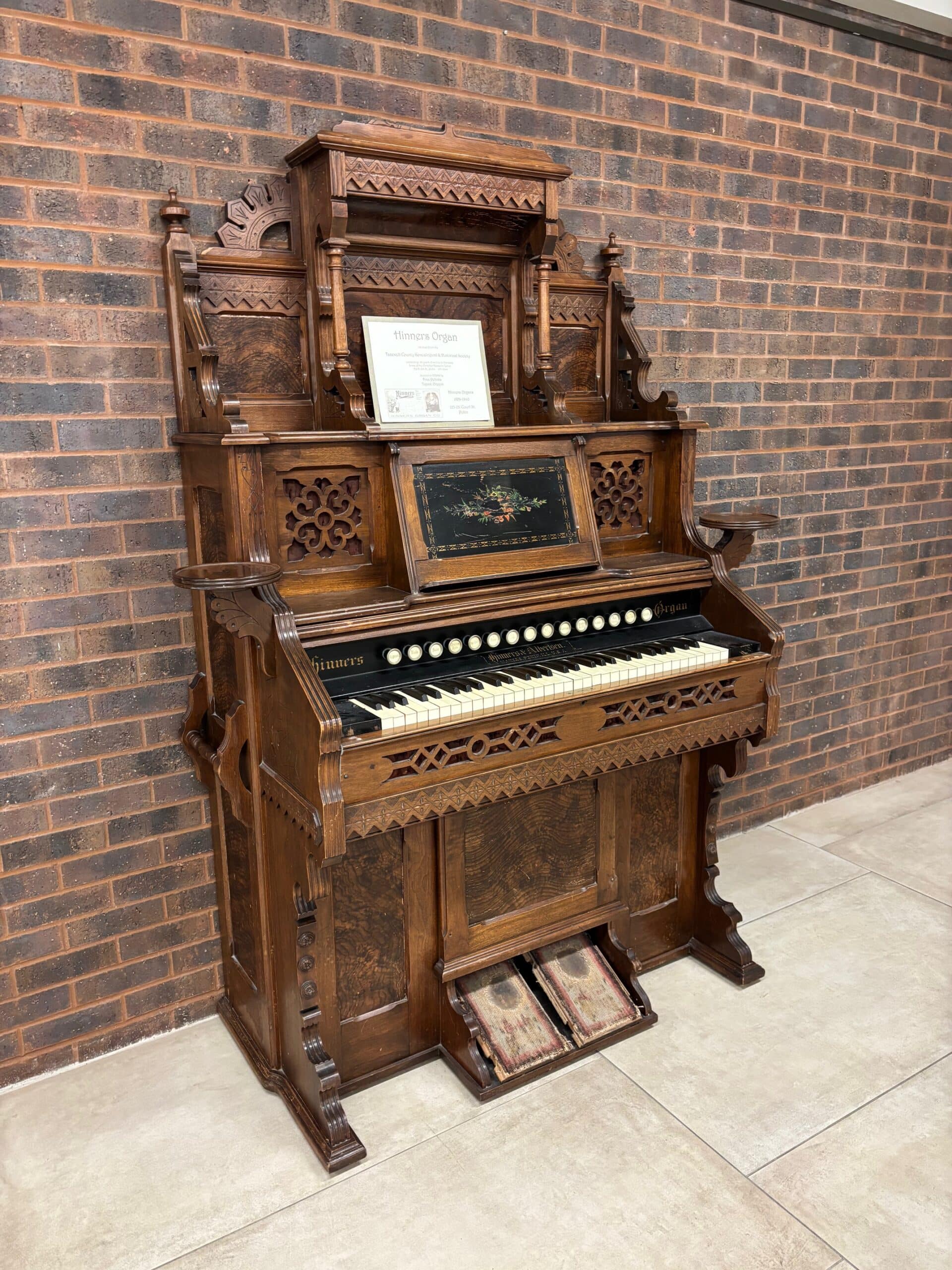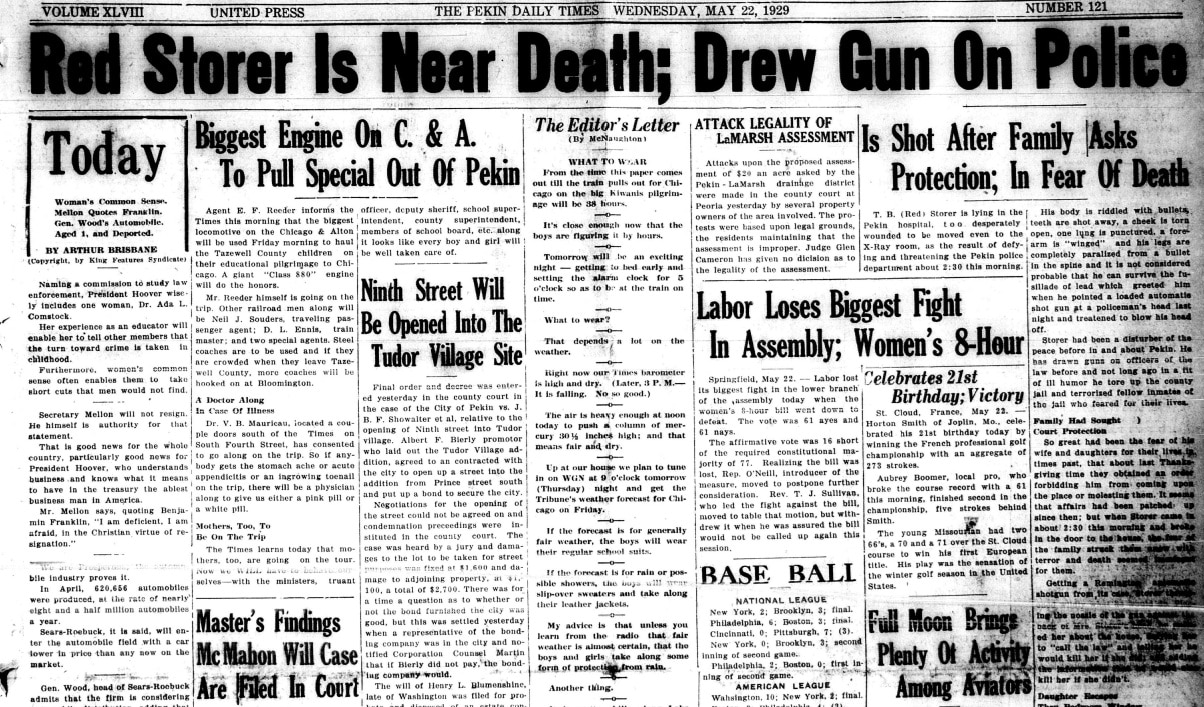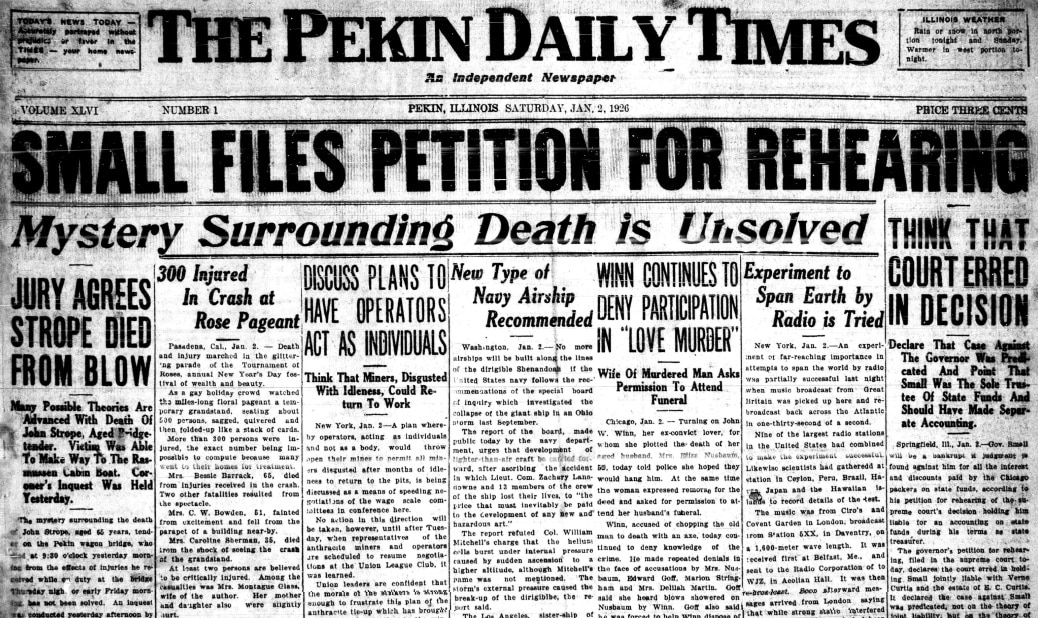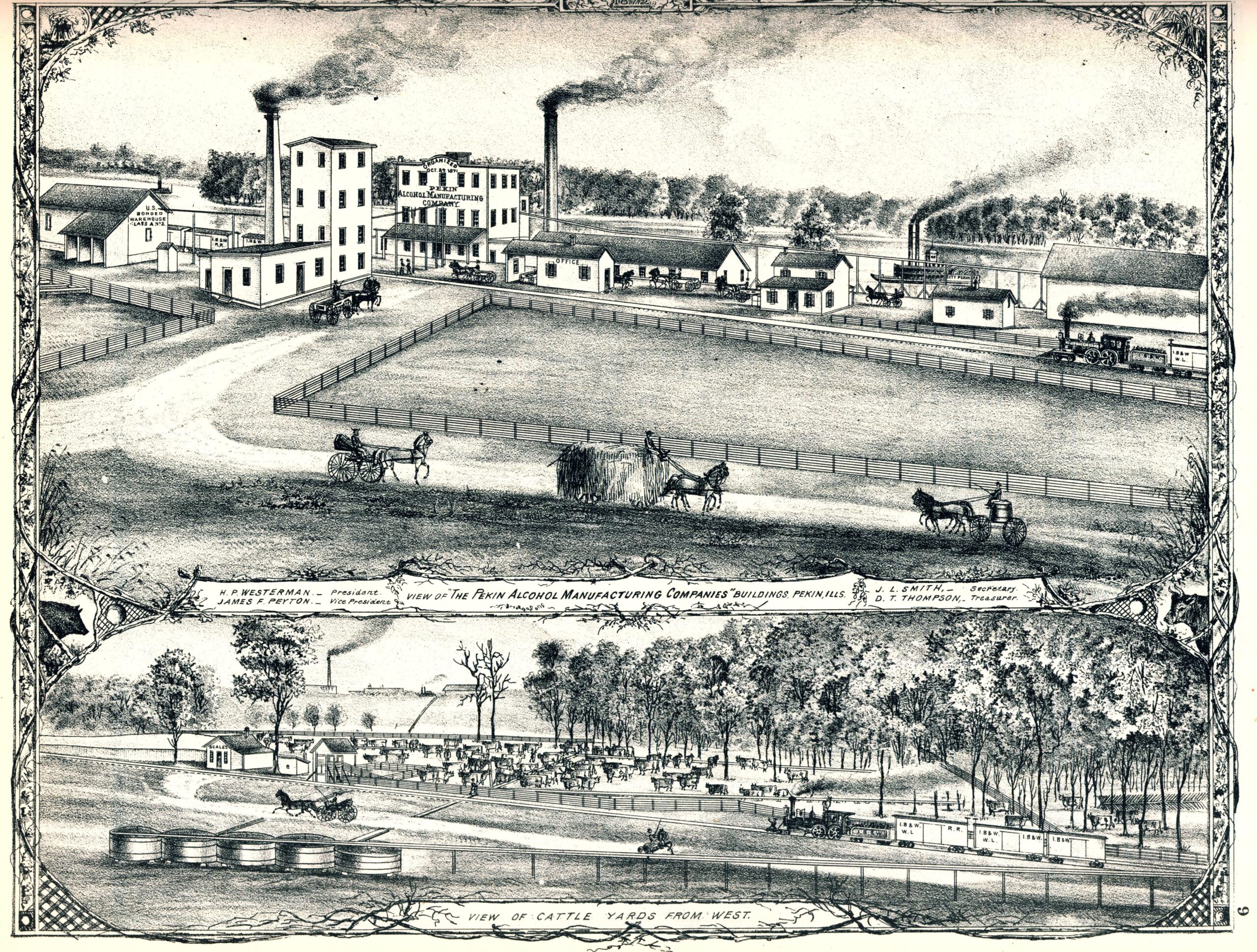This is an updated reprint of a “From the Local History Room” column that first appeared in June 2013, before the launch of this weblog.
The year 1829 was very eventful for the fledgling Tazewell County. Not even two years had elapsed since the county had been created by the Illinois legislature, but the need had already arisen for a jail.
Tazewell County’s first jail, according to Charles C. Chapman’s 1879 county history, “was a two-story structure, 16 feet square, made of solid hewn timber, and was one of the strongest and most costly jail buildings erected by the pioneers throughout Central Illinois.” It was erected at the county seat of Mackinaw at a cost of $325.75.
Appropriately, not long after the county got its first jail, it also got its first horse thief, William Cowhart – and its first jail break. Chapman recorded these memorable events on pages 236-241 of his county history. Most of Chapman’s account, however, was in fact a reprint of an 1853 newspaper article that had been printed in the Bloomington Pantagraph. The article’s author was none other than Tazewell County pioneer Nathan Dillon, traditionally but erroneously regarded as the county’s first permanent white settler (William Blanchard came a year before Dillon, and the French Catholic fur traders who lived at the future site of Wesley City/Creve Coeur arrived before Blanchard), and the namesake of Dillon Township.
Dillon recalled:
“James Willis and his brother were the first pioneers on Sandy, in the neighborhood of where the flourishing village of Magnolia, in Marshall county, now stands, they having located there as early as 1827 or ’28, their nearest neighbor at that time being William Holland, who had already settled at Washington, Tazewell county, where he still lives. One cold Friday in the winter James Willis, who had been boarding at William Hall’s, in Dillon settlement on the Mackinaw, started on a trip with a young man calling himself by the name of Cowhart, whom he had hired to go and work for him at his new location. The distance was fifty miles and Holland’s the only family on the road. Willis was mounted on a fine horse, well equipped. The day was very cold and when they got to Crow creek, eighteen miles north of Holland’s, Willis dismounted and let Cowhart have his horse, overcoat and equipage, and took the gun belonging to Cowhart, supposing it to be loaded.
“Cowhart mounted, but instantly took the other end of the road. Willis, thinking that a shot from the gun might bring the rogue to a sense of duty, brought it to bear upon him, but upon trial found that the touchhole had been plugged with a green stalk, and so the man, money and equipage disappeared without any hindrance.
“Willis was quite unwell eighteen miles from any house and it was snowing, but he beat his way back to Holland’s. It happened that Abraham Hiner, a neighbor of mine, was there, and Willis made out a description of the robber and sent it by Hiner to me, with the request that I should do what I could for him.
“We immediately called our neighbors together and it was agreed that Daniel Hodgson, my brothers Daniel, Walter and Joseph, and myself would give him a chase, though it still remained cold and it was thirty-six hours after the commission of the robbery, which occurred forty miles away,”
Over the course of several days, Dillon and his posse engaged in a prolonged pursuit of Cowhart that took them over the Illinois border into Indiana. Because it was winter and snow blanketed the ground, tracking Cowhart was not difficult. The posse captured him near Rockville, Ind.
On their return trip, the posse stopped briefly at a tavern in Newport, Ind., where they encountered some resistance from some of the locals, who attempted to help Cowhart escape from their custody. Dillon wrote:
“About the time we were ready to start the man at the writing-desk proved to be a lawyer, and presented a petition to our prisoner to sign, praying for a writ of habeas corpus. I snatched the petition from the prisoner’s hand, saw what it was, gave it to the lawyer and told him to keep it to himself or I would give him trouble; whereupon he grew saucy, but went back when I walked towards him until he reached the end of the room; told me, I believe, that I was ‘out of order’; not to touch him. I told him plainly that if I heard another word from him I certainly should slap his jaw, then left him pale as death and turned to the prisoner and took him by the collar. He attempting to get away, some of the men took hold of me to assist him, exclaiming that there should be no dragging out. I gave him a stout jerk, at the same time Hodson and my brothers Daniel, Joseph and Walter assisted him with a shove, and he went out in short order. We set him astride of one of our horses just as the landlord and another man approached, and said we had no business to come there in such a way. The prisoner begged for help. We told him that if he attempted to get off the horse, or if any man attempted to assist him, we would ‘blow him through.’ With that we left them and got into our own State the same night. Next day we started for home, which we reached with our prisoner, after being out nine days, some of which were as cold as I ever experienced.
“Willis recovered all that Cowhart had robbed him of except two dollars and fifty cents.
“It was the same winter that the jail at Mackinaw was being built; and the prisoner was guarded by old Jimmy Scott, Deputy Sheriff, until it was deemed sufficiently strong to keep him safely. Soon after he was put into it, however, somebody was friendly enough to let him out, and he escaped trial and the penitentiary.”
In the spring, a bounty of $20 was set “for the apprehension and delivery of William Cowhart who was let out of jail, and also the person who let him out.” But Cowhart had made a clean getaway, and no one ever collected the reward.
Chapman concludes his story with the observation, “Cowhart proved to be an expensive settler to the county, for, we find the Court gave James Scott $68 for keeping him. For guarding Cowhart, John Hodgson, William Davis, John Ford, A. Wright, William Sampson and F. Seward each received $2, Nathan Dillon $33.68; Daniel Hodgson $5, and Martin Porter $1, making a total of $119.68, within $5.32 as much as the court-house cost, and it would have paid the County Treasurer’s salary for three years.”





